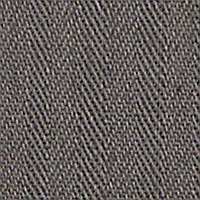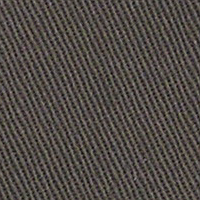U.S. Navy Men's Trousers
Utility Trousers Type N-3



Specification 55-J-9A (1943)
Stock No. 37-T-375
The N-3 trousers were part of a 4-piece utility uniform issued to U.S. Navy ground personnel. Recipients of the N-3 utility uniform included shore parties, construction battalions, amphibious units, combat, and security units. Utility trousers were an individual allowance for personnel serving at overseas bases. Three pairs of utility trousers were issued to eligible personnel assigned to bases located in temperate, tropical, or cold climates.
(hover for expanded view)
|
By the spring of 1943 the Navy had developed a new and improved line of special and protective clothing. Items were given an alpha numeric nomenclature of N-1, N-2, or N-3. The new issues included wool and wool lined winter wear, protective rain wear, and warm weather utilities. Special and protective clothing types were to be issued according to job function and weather conditions. Sizing was roomy allowing garments to be layered over one another in order to provide warmth, create a wind and water-proof "barrier", and at the same time allow flexibility of movement. New colors were introduced to provide better camouflage protection to forces deployed in combat zones. Instead of blue, black, white, and gray colors used in previous issues, the new garments would be either khaki, olive drab shade 7, or light green for items made of jungle cloth. Standard lists of outfits consisting of various "N" designated items were developed for issue to Navy ground personnel serving overseas in tropical, temperate, cold, and arctic regions. There was also a standard outfit list and allowance recommendations for personnel serving afloat. The utility trousers were included in the list of items assigned the N-3 nomenclature. A list of N-3 articles and corresponding specification numbers follow:
Specialized and protective clothing could be issued either as an individual allowance or unit allowance. Unit allowances were calculated as a percentage of the compliment of a particular base. For example, at an aviation base it was generally recommended that enough "N" class articles be ordered to outfit 30% of the personnel. Utility uniforms were issued as an individual allowance to naval personnel serving ashore at overseas bases. The various components of the utility uniform were issued to the individual in the following quantities:
Utilities were issued in cold, temperate, and tropical climates. Some examples of units that received N-3 utility uniforms include Construction Battalions, Amphibious Forces, and Beach Parties. Prior to developing improved versions of its special and protective clothing, the Bureau of Yards and Docks was outfitting its ground personnel with Army herringbone twill designs. One-piece Army work suits and slightly modified Army two-piece suits were issued for chore work and hot weather field use. In 1943, the Navy approved a new multi-piece utility uniform to replace the Army types it was using. This time, instead of an Army design, the Navy patterned the new utility jacket and trousers on the Marine Corps' M-1941 utility uniform then in use. In addition to the jacket and trousers, both a lightweight broadcloth shirt and a baseball-style herringbone twill cap were developed to complete the new outfit. |
The Army's and Marine Corps' early HBT uniforms were, out of necessity, pushed into the combat role by the sudden onset of war. Evaluations of the early HBT uniforms led to improvements in subsequent issues. One area identified for immediate improvement was the need for better camouflage concealment in the jungle terrain of the South Pacific. In response, the Marine Corps opted to issue camouflage patterned utilities in 1942. After experimenting with a camouflage one-piece jungle suit in 1942, the Army approved the use of a darker shade of material in its standard HBT uniforms in the spring of 1943 . Though the Army continued to develop different types of camouflage uniforms, the darkened 2-piece HBT uniform would remain its standard issue hot weather combat field uniform throughout the war. At this time, the Navy also chose to produce their new utility uniform in the dark green olive drab shade 7 color. Army testing and reports from the field eventually revealed that a single dark shade of olive drab offered better overall camouflage properties in jungle environments than did various patterned designs. As a result, in the fall of 1944, 8.5 ounce, olive drab shade 7, herringbone twill material was standardized for use in Army and Navy utility uniforms (See joint Army-Navy specification JAN-C-154, Cloth, Herringbone Twill, dated 30 November 1944). Navy and Marine Corps utility trousers were, in fact, very similar. The basic pattern was a robust and simple design that resembled denim work jeans of the period. They featured two rear patch pockets, two front internally hung pockets, flat-felled seams, a low hung crotch, and roomy rear. These features, along with a fabric offering good wear characteristics, provided an ideal trouser to facilitate the freedom of movement and durability required for field work.
The Navy trousers were, however, different from their Marine Corps cousins in a few ways. The Navy used 8.5 ounce material instead of 9 ounce, the darker olive drab shade 7 color was used, and the front opening had an exposed waistband button as opposed to the fully concealed front opening found on Marine Corps trousers. Navy utilities had an identifying "USN" ink stamp applied to the top right rear pocket of the trousers and to the breast pocket of the jacket, whereas the Marines only placed their identifying mark on the chest pocket of the coat. Variations of the Navy ink stamping exist due to the use of different font types and the on and off again use of periods separating the letters.
There was at least one variation of the Navy utility trousers. Quantities of trousers were made up in 8.2 ounce uniform twill as an alternative to the 8.5 ounce HBT material. There was no other difference in the trousers aside from the type of material used. Early on, before the development of the N-3 HBT outfit, the Navy made use of uniform twill in the production of their Army type utilities. This practice helped to offset shortages of HBT material created by the enormous demand for uniforms by all branches of service. The Navy's early use of uniform twill predated the Army's study of uniform twill as a suitable material for a tropical combat uniform during 1943 tests conducted in the Florida Everglades. After Army testing found uniform twill suitable for tropical wear, the material was adopted to help meet fatigue uniform needs from the fall of 1943 to the spring of 1945 (see U.S. Army Specification PQD 42C, Trousers, Uniform Twill, O.D. 7 Special). This same 8.2 ounce, Olive drab shade 7, uniform twill material was also used in the production of Navy N-3 utility trousers. |










